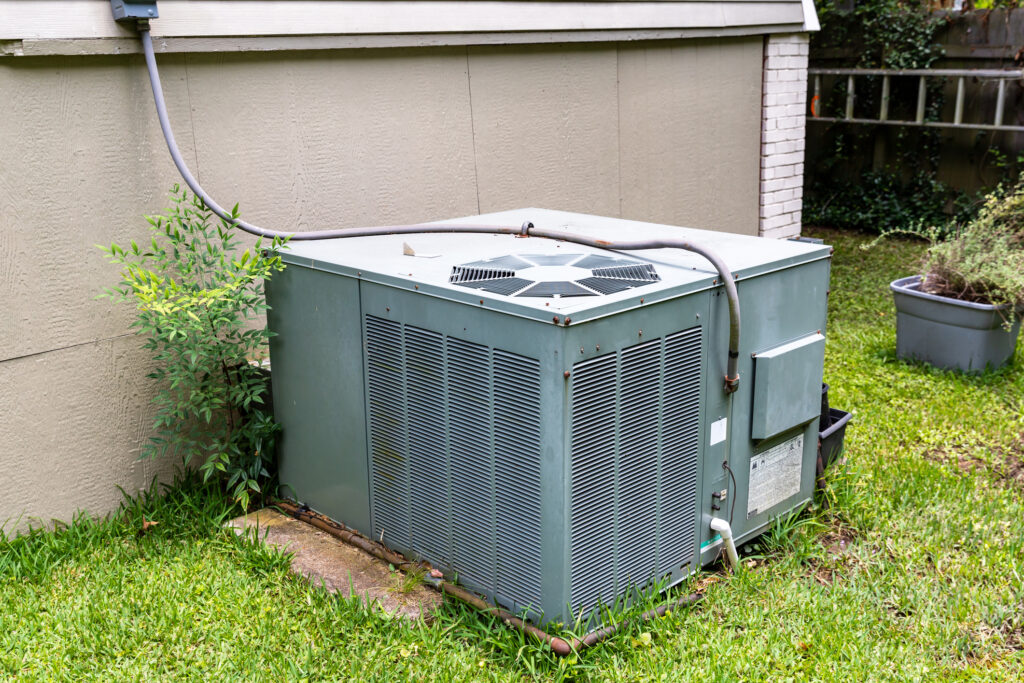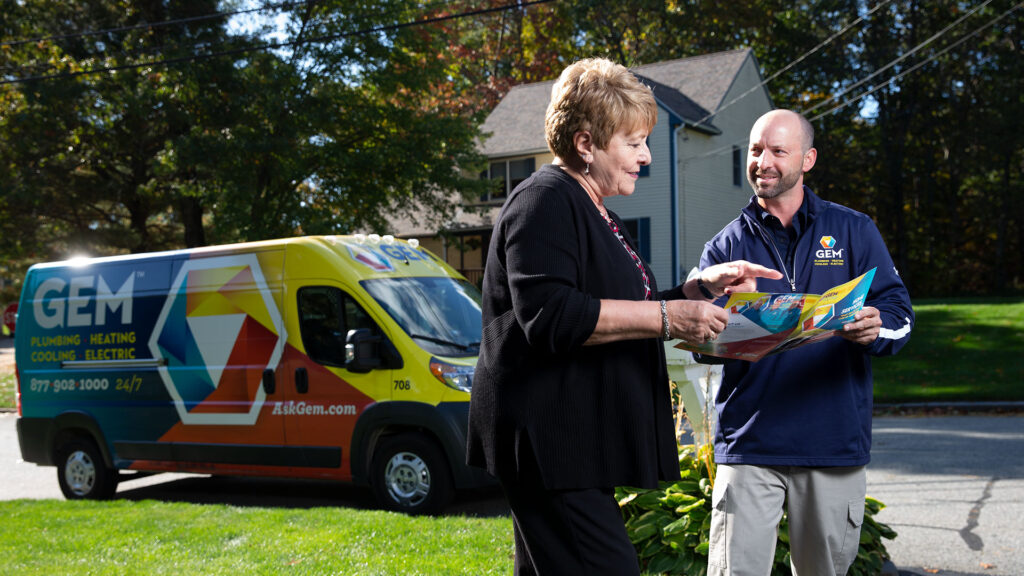Power outages never come at a convenient time. In the dark about what went wrong and when your power will come back? Learn more about power outages, what causes them, and power outage protocol to shed some light –– and more importantly, keep you and your family safe and happy.
If you suspect the power outage issue is one you can fix yourself, here’s how to check your circuit breaker.
What Are Power Outages?
Simply put, a power outage is the loss of power or electrical supply in a given area of the power grid. A single home, a whole block, or even an entire city could go dark.
Power outages can take on different forms:
- Blackout: Blackouts are the most severe form of a power outage and occur when a power station trips (temporarily shuts down) and there’s a total loss of power in an area.
- Brownout: A brownout brings dim lighting or poor equipment performance resulting from a drop of voltage in an electrical power supply.
- Transient or permanent fault: This type of outage occurs when there’s an immense loss of power in an area due to a fault on a power line (any abnormal electric current).
Recognize the kind of power outage you’re experiencing? Let’s look into what could have caused it.
What Causes Power Outages?
There are a number of reasons you may be experiencing a power outage. Understanding the most common causes can help you identify what exactly went wrong and better prepare for these issues in the future.
Common Causes of Power Outages
Let’s take a look at some of the most common causes of outages to help determine what went awry:
- Animals: Watching squirrels nibble on acorns from afar is nice, but seeing them climb on equipment like transformers and fuses is concerning. Animals can force a short circuit that interrupts the flow of electricity and can cause a blackout.
- Automobile Accidents: Vehicles coming into contact with transmission poles during an accident is a common cause of outages, as they damage power lines and result in power loss that usually spans just a few homes.
- Planned Outages: Although they may be unexpected, some power outages are actually planned, like when a utility company needs to perform maintenance on a system. Usually companies notify their affected customers in advance, so keep a look out for those alerts sent by phone, email, or snail mail!
- Trees: Watch out for those big, lofty trees on your block, as their limbs could cause damage by falling onto power lines (even in calm weather).
Check to see if the trees near your home are in need of maintenance or trimming, especially as nature and the climate are major culprits of outages.
How the Forecast Takes Its Toll
Outages often occur when bad weather hits your area. Here are some of the forecasts you should look out for:
- Lightning: Electrical equipment like utility poles and wires, as well as tall trees are easy targets for lightning to strike as it finds the fastest path to the ground.
- Wind: Strong gusts can not only cause power lines to swing together, resulting in faults or short circuits, but they can also disturb tree branches.
- Snow and ice: The buildup on electrical equipment and power lines can cause them to falter and eventually break.
- Rain and flooding: Being that water and electricity don’t get along, heavy rain and flooding can be a hazard to both overhead and underground electrical equipment.
It’s important to stay on top of your local forecast –– that way you’ll be prepared when the weather takes a turn for the worse.
How Long Do Power Outages Last?
While some power outages may end minutes after they begin, others can last from hours to days to weeks.
The duration of your outage is largely dependent on the severity of the damage. Your best bet is to contact your utility provider for an estimated time to restore the power. Many utility companies also provide power outage maps or outage alerts to check with real-time updates.
Bearing With a Power Outage Today
So, you’re dealing with a power outage today. Let’s break down what can be done, as well as some proper power outage etiquette.
Reporting Power Outages
When a power outage hits, it’s best practice to notify your utility provider even if they may already be informed.
Often, companies provide a phone number you can text or they’ll likely offer the choice to report the power loss online. Check your utility company’s website to see the options in your area.
Checking The Status Of An Outage
Can’t bear being left in the dark about your outage status? Power outage maps will be your best friend!
These maps, which you can find on your utility company’s website, can provide real-time information on the range of the outage, crew status, and estimated restoration time.
To reach your local power outage map on your utility company’s website, you can use this national power outage map and click on your current location.
Do’s And Dont’s During An Outage
Now that you’ve contacted your utility company and know how to stay up to date on the status, let’s take a look at what you should (and shouldn’t) do for the time being:
Do
- Keep refrigerators and freezers closed as much as possible to preserve your food and drinks. And if things warm-up and you’re not sure whether to keep or toss, remember: When in doubt, throw it out!
- Disconnect appliances and electronics to avoid any damage from electrical surges when the power turns back on.
- Turn your lights off except for one to prevent destruction once service is restored. This way, you’ll still know when your power has been restored.
- Use flashlights instead of candles to reduce the risk of fire. If you must use candles, make sure to place them on proper candle holders and never leave them unattended.
Don’t
- Use generators or a charcoal or gas grill indoors, as this could cause a buildup of carbon monoxide.
- Use gas stoves or ovens in order to heat your home.
- Go near downed power lines and risk your own safety.
There are a number of measures you can take to keep you and your family safe and as comfortable as possible if and when the power goes out again:
- Since it’s possible the power will be out for a long time, make sure to stock up on non-perishables and bottled water.
- Double-check that you have extra batteries handy and that all of your devices are charged.
- Ensure your home has working carbon monoxide detectors.
- Practice generator safety! If you choose to use one, follow the manufacturer’s instructions and only plug in recommended appliances.
Establishing an action plan can be the difference between a safe and quick power recovery and an uneasy, stressful situation. Check out how to create an action plan when you’re expecting a storm to prepare for these events.



